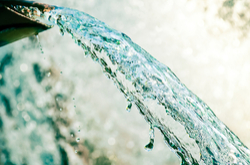An eco-friendly, low-cost solution to wastewater treatment
According to United Nations estimates, two thirds of the world’s population could be living under water-stressed conditions by 2025. This pressure on the quantity and quality of an area’s available water resources could adversely affect many aspects of modern life, such as the production of water-intensive goods like cars and clothing. It may also lead to higher rates of illness, and food and energy shortages. One way of alleviating this stress is through wastewater reuse. Spurred by this idea, the EU-funded REMEB project was launched with the goal of creating a sustainable, low-cost wastewater treatment system. It has since developed and validated a novel membrane bioreactor (MBR) that uses ceramic membranes made from recycled materials. Recycled ceramic membranes, the eco-friendly solution Conventional ceramic membranes are traditionally quite costly because of expensive materials like alumina, zirconia and titania oxide used to manufacture them. Currently, a more popular alternative due to its lower cost is the polymeric membrane. However, while they may be cheaper, polymeric membranes don’t work as well in extreme atmospheres and have a shorter life cycle. REMEB’s solution to the problem is recycled ceramic membranes. These membranes have filtration properties that are comparable with their high-end ceramic counterparts currently on the market, but without the use of costly minerals. The membranes are made from wastes from the ceramic and marble industries and from olive oil production. Incorporating these wastes – chamotte (from fired tile scrap), marble dust and olive stones – makes recycled ceramic membranes cheaper to manufacture than their conventional ceramic counterparts. They also help to reduce landfill waste volumes, thus promoting a circular economy. The flat-sheet, inorganic membranes measure 200 x 500 mm. In each MBR, there are four modules. Each module is 10 m2 in area and comprises 50 membranes. The system is also stackable, which makes it possible to enlarge it and expand its capacity. The MBR combines membrane technology with a biological wastewater treatment process. The membranes in the system act as barriers between the biomass and the treated water. As fluid passes through the membranes’ tiny pores, suspended particles and other substances are caught in the membranes, allowing clean water to flow through. Membrane manufacture and system testing The REMEB ceramic membranes were made at a ceramic tile company in Spain, opening a new line of business for the sector. Further demonstrating its potential, the technology was then replicated in Italy and Turkey at the pilot scale by using locally available waste resources such as coffee, hazelnuts, dolomite and shells. The MBR was tested in a municipal wastewater treatment plant in Aledo, Murcia, a water-stressed municipality in south-eastern Spain. Although the area’s treated water is used for agricultural activities, “the technology is totally translatable to the industrial sector,” according to a news item posted on the project website. Other applications for the technology include garden irrigation and street cleansing. Even though REMEB (ECO-FRIENDLY CERAMIC MEMBRANE BIOREACTOR (MBR) BASED ON RECYCLED AGRICULTURAL AND INDUSTRIAL WASTES FOR WASTE WATER REUSE) has ended, the project’s technicians intend to continue their research in order to fully optimise the system and facilitate market uptake. For more information, please see: REMEB project website
Countries
Spain



